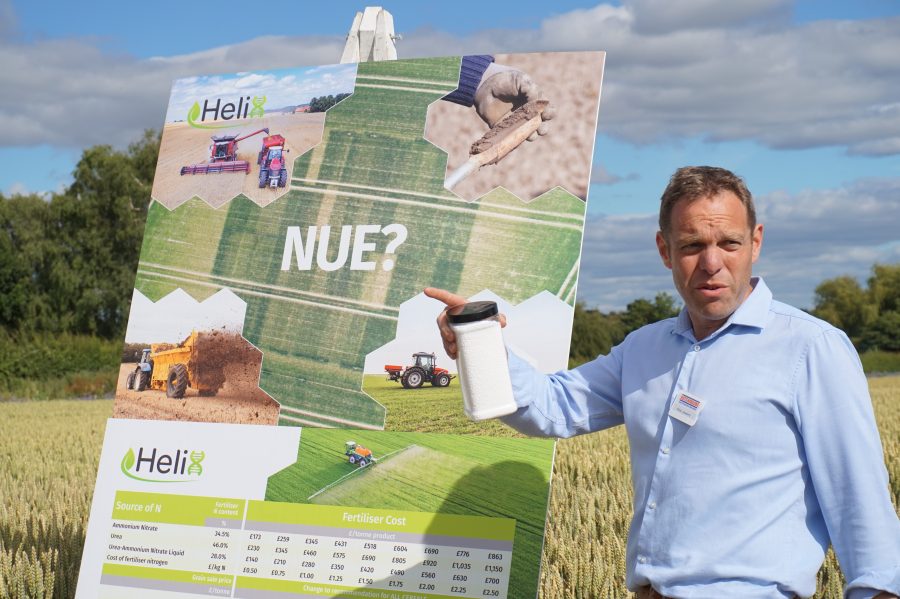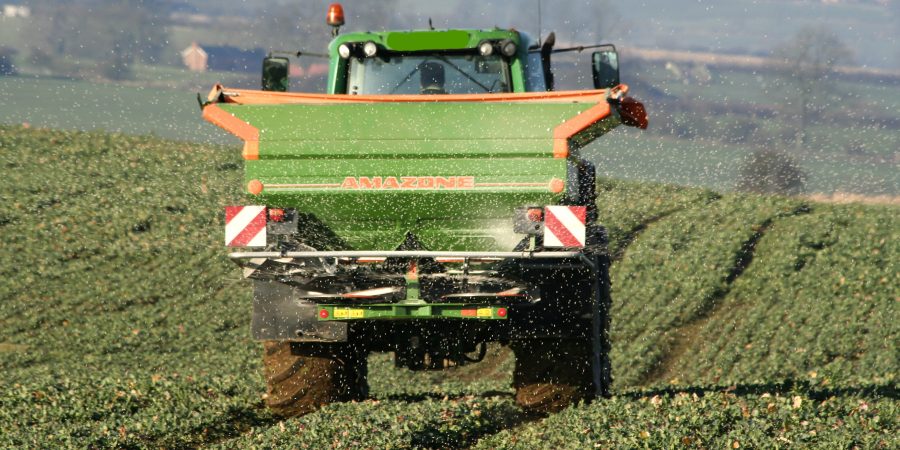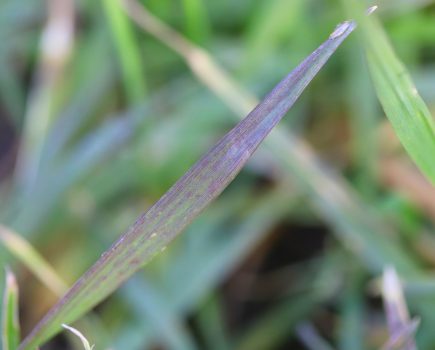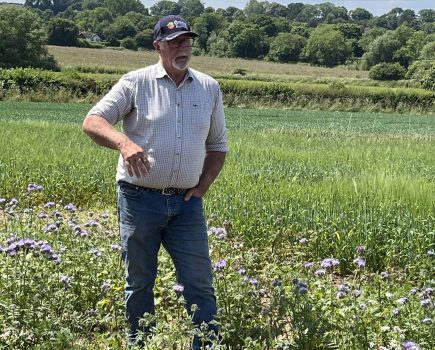Applying placement fertiliser with seed is increasingly being used as a way of reducing fertiliser use while benefiting crop establishment, the environment and the bottom line, writes Rob Jewers, Hutchinsons.
Suffolk farmer Tom Jewers is one grower who has seen clear yield benefits from applying placement phosphate fertiliser in winter wheat over two consecutive years, giving him confidence to potentially expand its use across all 190 ha of wheat this autumn.
Mr Jewers, who hosts the Helix East demonstration, first tried placement phosphate fertiliser in winter wheat during 2021/22, after previously experimenting with starter fertilisers in spring crops.
A tramline trial in a field of KWS Extase first wheat, on clay loam soil, was direct-drilled with the farm’s Weaving GD on 30 September. Most was untreated, but two tramlines received different placement fertiliser products; 7 kg/ha of Primary-P, and 10 kg/ha of Crystal Green.
“We saw a clear visual response in crop establishment in autumn 2021, which we hadn’t seen previously with placement fertilisers in spring crops,” he said.
Yield responses over the untreated control (10.29 t/ha) were similar for both products, at 0.6 t/ha and 0.8 t/ha respectively.
Mr Jewers increased placement fertiliser use the following year to 150 ha, receiving some funding to support this via the Landscape Enterprise Networks project (www.landscapeenterprisenetworks.com) to help offset potential costs, such as depletion of soil indices.
He also conducted another Helix trial, applying 7 kg/ha of Primary-P across most of a field of Gleam second wheat, direct-drilled on 14 October. One tramline was untreated, while a biological phosphate liberator product was applied to another.
Initial analysis of combine yield data from harvest 2023 indicates a potential 2 t/ha uplift in the Primary-P treated field over the untreated, with distinct differences visible on the yield map (see image).
“It’s only provisional combine yield data, which needs to be validated in Omnia, but it is really promising,” said Mr Jewers.
Placement fertiliser trials elsewhere in Helix have also shown good yield responses in recent years, albeit with some variability between sites.
Reducing phosphate
Hutchinsons crop nutrition specialist Rob Jewers said placement fertilisers offer an effective way of reducing total phosphate use and delivering financial and environmental benefits, and are being increasingly supported by water companies (see box).
They work by stimulating early root growth and allowing crops to better utilise what is already in the soil.
“It definitely seems like the right approach,” said Tom Jewers. “We’re applying 90% less phosphate compared with previously when we might have used
150 kg/ha of TSP every couple of years to maintain and build soil indices, so there’s a benefit in pure cost terms, but it also helps water quality.”
Regular soil testing will monitor any changes in soil indices, he noted.
Funding available
Protecting and enhancing the health of watercourses and ground water is a priority for water companies such as Anglian Water, which is one of several offering support for farmers to reduce raw water quality risks within their catchments.
This includes their annual farm innovation grant, which supports innovative solutions to reduce raw water quality issues such as nitrates, phosphates and/or soil loss in priority catchments across the region.
Up to £7,500 per holding is available, and unlike other grant schemes, there is no specific list of qualifying options. Applications are judged against certain criteria, including: funds requested versus farmer funding; location and connectivity to a raw drinking water source; potential benefits and learnings; likely risk reduction.
The application window runs from 2 October to 12 November 2023.
See www.ricardo.com/FIG2023








